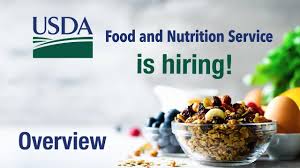Many Americans rely on government assistance programs to help meet their monthly needs, particularly for food. Programs like SNAP, WIC, and others provide financial support to purchase groceries, offer nutritional education, and provide access to locally grown food. If you’re looking to improve your quality of life and supplement your income, here’s what you need to know.
SNAP (Supplemental Nutrition Assistance Program)
Previously known as the Food Stamps program, SNAP helps millions of Americans buy groceries each month. Managed by the USDA and the Food and Nutrition Service (FNS), SNAP provides monthly benefits to eligible low-income individuals and families.
Who Qualifies for SNAP? To qualify for SNAP, you must:
- Apply in your state of residence.
- Meet income and resource limits.
SNAP benefits can range from $292 to $1,756 per month, depending on your household size and other circumstances.
WIC (Women, Infants, and Children)
The Special Supplemental Nutrition Program for Women, Infants, and Children (WIC) offers support for those at nutritional risk. This program provides nutritious foods, nutrition education, and referrals to healthcare services.
Eligibility for WIC To qualify for WIC, you must:
- Be pregnant, breastfeeding, or a postpartum woman.
- Be an infant or child up to 5 years old.
- Be determined to be at nutritional risk by a health professional.
WIC offers supplemental food, nutrition education, and healthcare referrals to help recipients maintain a healthy lifestyle.
Also Read – Biggest SSI Payment in U.S. History: December 31, 2024 Payment Details
Farmers Market Nutrition Program (FMNP)
Participants in the WIC program may also receive FMNP coupons, which can be used at authorized farmers’ markets and roadside stands. This initiative allows participants to access fresh, locally grown food, supporting both nutrition and local farmers.
Support for Seniors
Seniors can benefit from the Senior Farmers Market Nutrition Program (SFMNP), which helps older adults access fresh, affordable produce. This program ensures seniors can maintain a healthy diet, especially when living on a fixed income.
NAP (Nutrition Assistance Program)
The Nutrition Assistance Program (NAP) serves U.S. territories, including:
- Puerto Rico
- American Samoa
- The Northern Mariana Islands
NAP operates similarly to SNAP but is tailored for the specific needs of these territories.
Combining Programs
Many beneficiaries are eligible for multiple programs, allowing them to maximize their benefits. For instance, you can participate in both SNAP and WIC if you meet the requirements for each program. Additionally, programs like the Farmers Market Nutrition Program allow you to access fresh, nutritious food while stretching your budget further.
Final Thoughts
Federal nutrition programs like SNAP, WIC, and NAP are designed to help low-income families, seniors, and individuals with disabilities maintain a healthy lifestyle. By understanding the eligibility requirements and benefits of these programs, you can make informed decisions and secure the support you need.
Also Read – November 2024 Social Security: Final $2,710 Payment for Eligible 62-Year-Old Retirees
FAQs
What is the income limit for SNAP?
- The gross monthly income limit for an individual is $1,632.
What is WIC?
- WIC is the Special Supplemental Nutrition Program for Women, Infants, and Children, offering food, nutrition education, and healthcare referrals.
Can seniors get farmers market benefits?
- Yes, seniors can access benefits through the Senior Farmers Market Nutrition Program (SFMNP).
What is NAP?
- NAP is the Nutrition Assistance Program for U.S. territories, similar to SNAP.
Can I combine SNAP and WIC benefits?
- Yes, eligible participants can use both programs simultaneously.




![Tyson Foods Plant [Photo: Food Manufacturing]](https://southarkansassun.com/wp-content/uploads/2023/08/iStock_1185520857__1_.5e441daa51cca-600x337.jpg)







![Silverado Senior Living Management Inc. [Photo: Los Angeles Times]](https://southarkansassun.com/wp-content/uploads/2023/10/download-6-4-600x337.jpg)

![China's Wuhan Institute of Virology [Photo: Nature]](https://southarkansassun.com/wp-content/uploads/2023/09/d41586-021-01529-3_19239608-600x337.jpg)
















